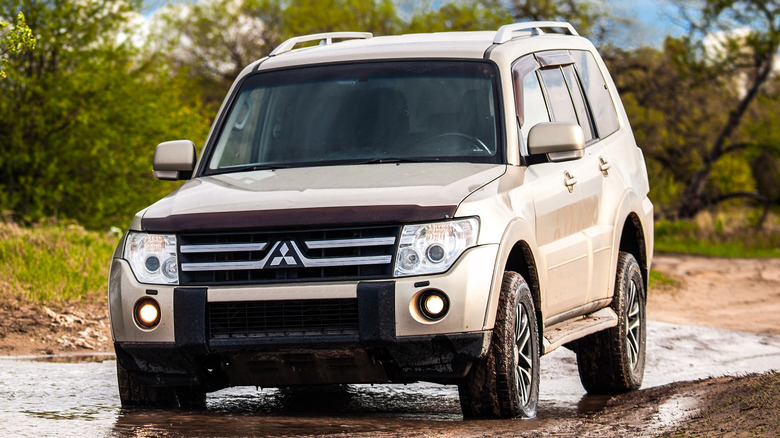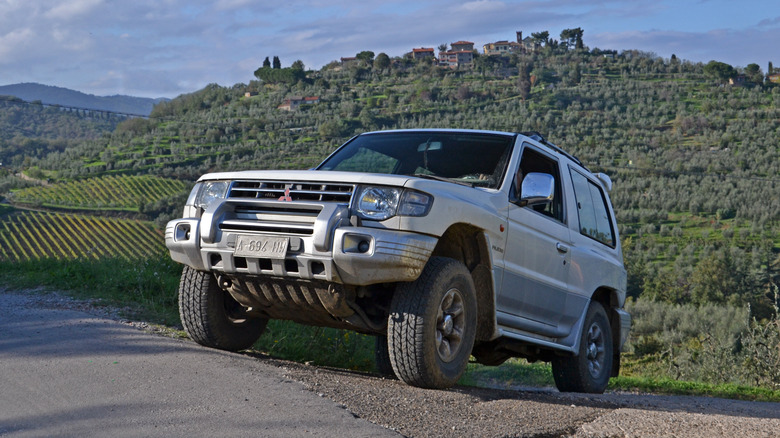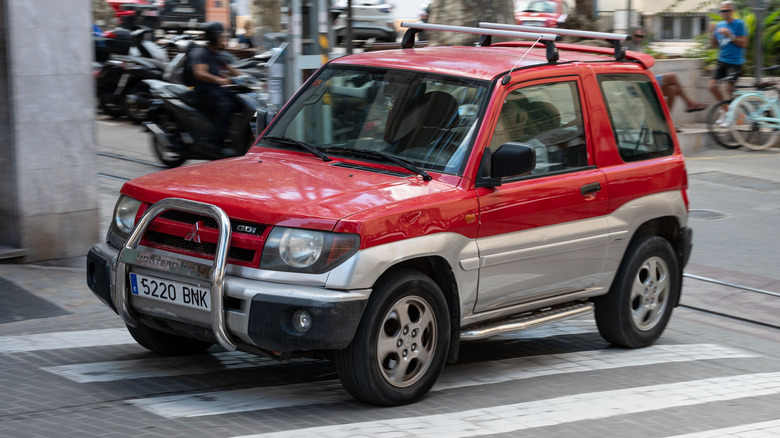Mitsubishi's Underrated SUV: The History Behind The Montero
More than a century has passed since Mitsubishi created its Model-A in 1917. In the wake of this historic vehicle followed a range of other auto icons. Today, the company's work with the Mitsubishi Outlander PHEV and similar models demonstrates that the automaker is likely to be a powerhouse in the future of electric vehicles, too.
The Outlander, for many drivers, is the face of the Mitsubishi SUV in the several forms it has taken since the concept was first shown off at a motor show in Detroit in 2001 as the ASX (Active Sports Crossover). By contrast, the earlier Mitsubishi Montero isn't always considered as notable. It's so much more than a footnote in SUV history, however.
Fans of the model have long appreciated its formidable form, performance, and presence, underappreciated characteristics that have led the cars to be widely undervalued. Let's take a closer look at the origins of the underrated Montero and the virtues that continued to make it worthy of attention as new iterations continued to release.
The Mitsubishi Montero arrives on the scene
The story of the Montero begins, perhaps, with that of the Mitsubishi PX33, the company's first four-wheel drive vehicle. This remarkable car was built in 1935 for the Japanese Army Automobile School. While it remained a prototype with only four examples built, its solid frame and versatility were design tenets that would be carried forward by the company that would develop the Montero.
In the PX33's wake followed the J-Series. These rugged and plucky Mitsubishi 4x4s were first created by the company in the early-to-mid 1950s, and though they weren't likely to blow drivers away with their specs (69 HP was the best their engines could muster), that was far from the intent. These were fully-licensed Jeeps built by Mitsubishi until 1998 and they offered a launching pad into a new realm of automobile. Mitsubishi intended to build on them by developing a widely-appealing all-terrain vehicle.
At the Tokyo Motor Show of 1973, the company flaunted a new concept vehicle. Combining those jeep aspects into something new, it became something of a revolution at the time. This bold new model would become known as the Mitsubishi Montero and would launch in Japan in 1982, arriving in the United States the following year.
The Montero's marvelous performance
The Montero triumphed at the 1983 Dakar Rally (in both the marathon and non-modified production car classes), a fantastic debut that demonstrated its suitability for both on- and off-road ventures. Though these were models adapted to the specific rigors of rally racing, they proved indicative of everything that the fledgling SUV seemed to want to be.
In the 1980s and 1990s, the world's (and particularly America's) growing taste for unstoppable vehicles of grandeur was really starting to develop. There was room for seven in the second generation of Montero, which made its way stateside in 1992. By the launch of the third generation model, it was rocking a unibody configuration, boosting reliability and handling, and was also capable of hitting 202 HP with a 0-60 mph of 10.2 seconds thanks to its 3.5 V6 GDI engine.
In the United States, Mitsubishi SUVs have never been dominant. The Montero stopped being sold in the states in 2006, unable to compete with the rise of powerhouse SUVs from other manufacturers. Of course, this doesn't mean that the Montero didn't make a real impression around the world. On the launch of the 2022MY Final Edition, which saw a limited exclusive Australian release, 3.3 million Monteros had been snapped up in total. It's quite the legacy.


